BetterStack
Recently (on the easy to use side) I’ve been using an online service called BetterStack, which provide a glossy mechanism for monitoring server uptime, with a free tier. Example here; https://mad-penguin-consulting-ltd.betteruptime.com/. I was happy initially, but the number of resources included in the free tier seems to have decreased so it became impractical for me and I started looking elsewhere (again).
Uptime Kuma
I already use Zabbix, Monit and NetData, but these are a little too heavy for simple up-time monitoring, but a recent YouTube video mentioned Uptime Kuma, so I thought I’d give it a go. This is an example of what it looks like operation; Status – Linux.UK
Really simple, but this is what I was looking for in terms of an embedded front-end, and in terms of the technical side, despite the relative non-user friendly looking instructions, it actually took about 2 minutes and worked first time.
Login
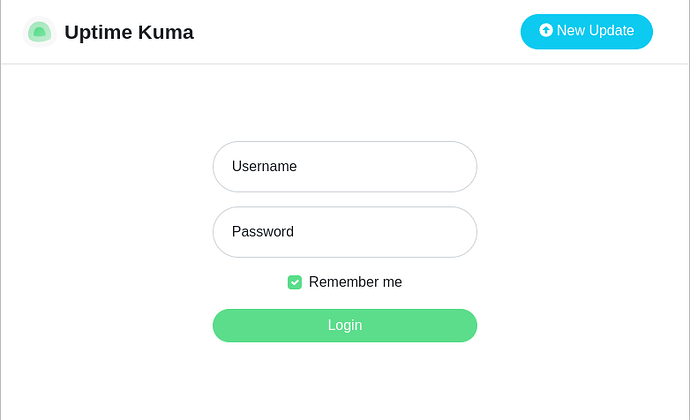
The interface is quite appealing, notably it’s very clean and offers both light and dark mode appearances … although there seems (?) to be a bug at the moment where status pages appear in dark mode only. It’s a very lightweight solution, I’m running it in a container on a Raspberry Pi (version#4, i.e. an older one) and it literally flies using maybe half a G of memory in total.
Dashboard
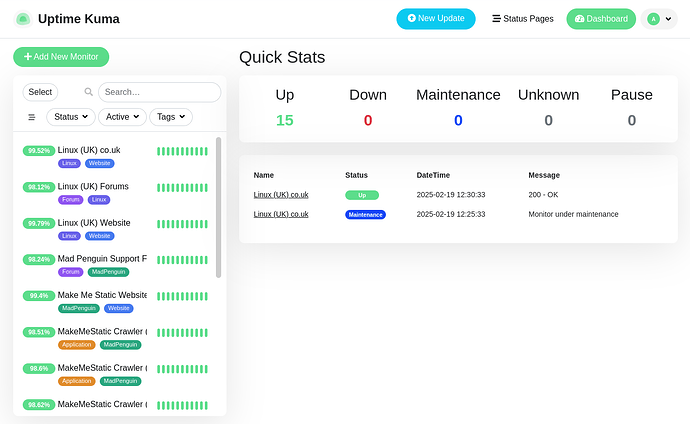
Once you log in, again a very clean interface with the concept of monitors (things you want to keep an eye on) and status pages, which are a collection of monitors. Although it might look a little simple, under the hood the setup is pretty comprehensive, indeed once you dig into notifications, sure it does email notification, but it also supports about 50 integrations with real-time messaging type applications and mobile apps … so if you want instant notification on your mobile app of choice, there’s a reasonable chance it’s available.
Main Settings
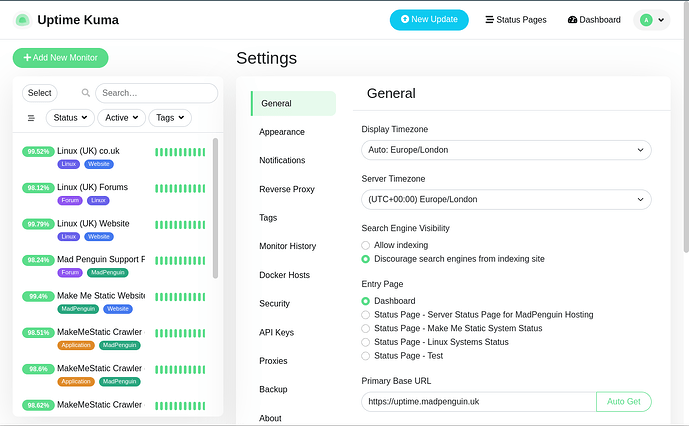
Once you’ve set up a bunch of monitors, the next step is to create a status page. You can either add individual monitors, or create groups of monitors if you’ve a lot to watch. So you could effectively group everything into one line which would effectively mean (a) all up or (b) something has a problem. (then you can drill down to find the specific problem)
Status Pages
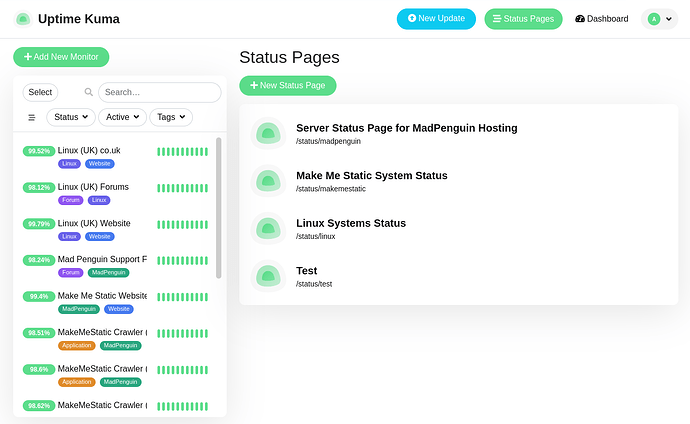
If you drill down into a status page, you see what would be visible to users if you publish the page to the Internet.
An example status page
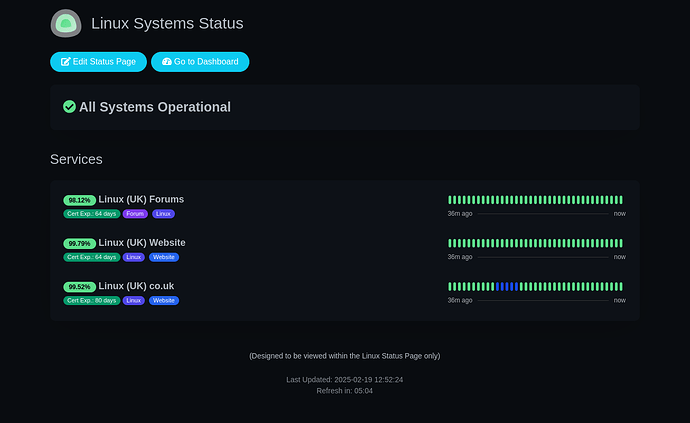
In this particular example you can see a time marked off in blue which was me trying out scheduled maintenance, so you can set a time-frame for a particular service where the monitor puts up maintenance warning on the status page and marks off the timeline in blue … useful to head off potential user queries in the event of an outage ![]()
Last but not least, you can drill down into specific monitors to get a more comprehensive view of what’s going on.
Status drill-down
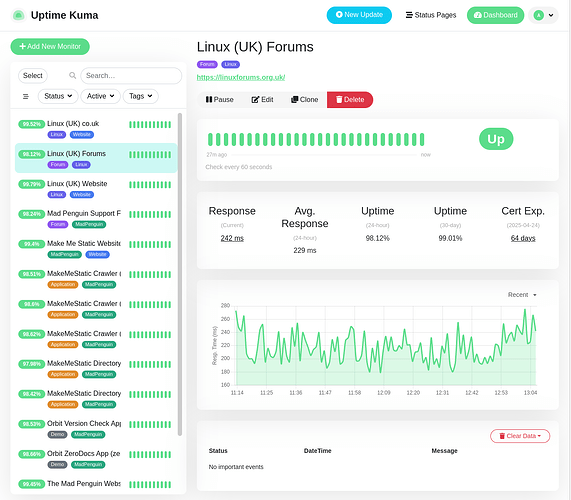
Any outages, downtime etc if applicable are listed at the bottom of the screen.
Pro’s
- Simple light-weight solution, runs on low-power hardware
- Open source, MIT (do whatever you want) license
- Very comprehensive feature-set within the context of uptime monitoring
- Excellent portfolio of notification integrations
- Very easy to set-up and use
- Easy to publish status pages
- Specific CloudFlare tunnel integration so you can host this “at home”
- Support for multiple users with optional 2FA (good security)
- No usage limits
Con’s
- Unpackaged, means you need to get your hands a little dirty to set it up
- Really needs a container platform to run (so Incus or Docker)
If you want to try it …
Let me know, I’m happy to add a couple of monitors and add a test status page. Alternatively if anyone wants their own instance, all setup, configured and hosted (just add your own monitors) again let me know and I can point you as a hosting service that only costs £2 a month ![]()
1 post – 1 participant





